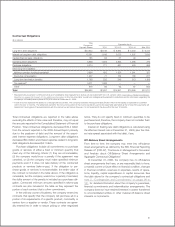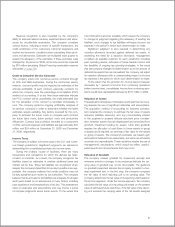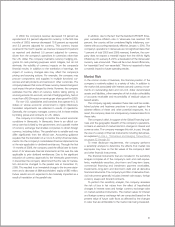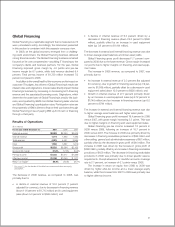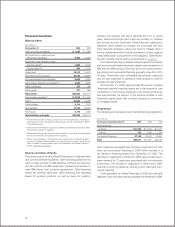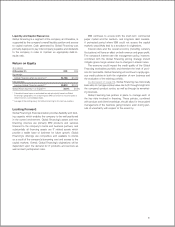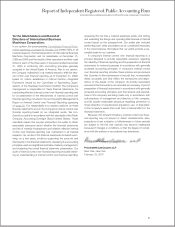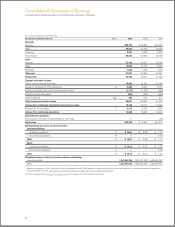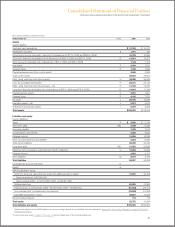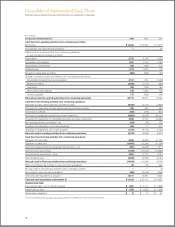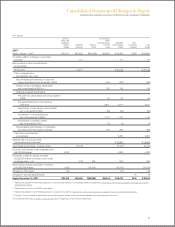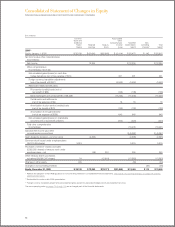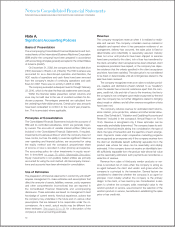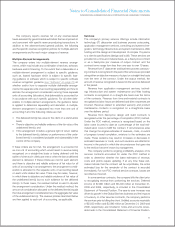IBM 2009 Annual Report Download - page 63
Download and view the complete annual report
Please find page 63 of the 2009 IBM annual report below. You can navigate through the pages in the report by either clicking on the pages listed below, or by using the keyword search tool below to find specific information within the annual report.
Liquidity and Capital Resources
Global Financing is a segment of the company and therefore, is
supported by the company’s overall liquidity position and access
to capital markets. Cash generated by Global Financing was
primarily deployed to pay intercompany payables and dividends
to the company in order to maintain an appropriate debt-to-
equity ratio.
Return on Equity
($ in millions)
At December 31: 2009 2008
Numerator:
Global Financing after-tax income(a)* $1,138 $1,049
Denominator:
Average Global Financing equity(b)** $3,312 $3,572
Global Financing return on equity(a) /(b) 34.4% 29.4%
* Calculated based upon an estimated tax rate principally based on Global
Financing’s geographic mix of earnings as IBM’s provision for income taxes is
determined on a consolidated basis.
** Average of the ending equity for Global Financing for the last five quarters.
Looking Forward
Global Financing’s financial position provides flexibility and fund-
ing capacity which enables the company to be well positioned
in the current environment. Global Financing’s assets and new
financing volumes are primarily IBM products and services
financed to the company’s clients and business partners, and
substantially all financing assets are IT related assets which
provide a stable base of business for future growth. Global
Financing’s offerings are competitive and available to clients
as a result of the company’s borrowing cost and access to the
capital markets. Overall, Global Financing’s originations will be
dependent upon the demand for IT products and services as
well as client participation rates.
IBM continues to access both the short-term commercial
paper market and the medium- and long-term debt markets.
A protracted period where IBM could not access the capital
markets would likely lead to a slowdown in originations.
Interest rates and the overall economy (including currency
fluctuations) will have an effect on both revenue and gross profit.
The company’s interest rate risk management policy, however,
combined with the Global Financing pricing strategy should
mitigate gross margin erosion due to changes in interest rates.
The economy could impact the credit quality of the Global
Financing receivables portfolio and therefore the level of provi-
sion for bad debts. Global Financing will continue to apply rigor-
ous credit policies in both the origination of new business and
the evaluation of the existing portfolio.
As discussed on page 59, Global Financing has historically
been able to manage residual value risk both through insight into
the company’s product cycles, as well as through its remarket-
ing business.
Global Financing has policies in place to manage each of
the key risks involved in financing. These policies, combined
with product and client knowledge, should allow for the prudent
management of the business going forward, even during peri-
ods of uncertainty with respect to the economy.
61


